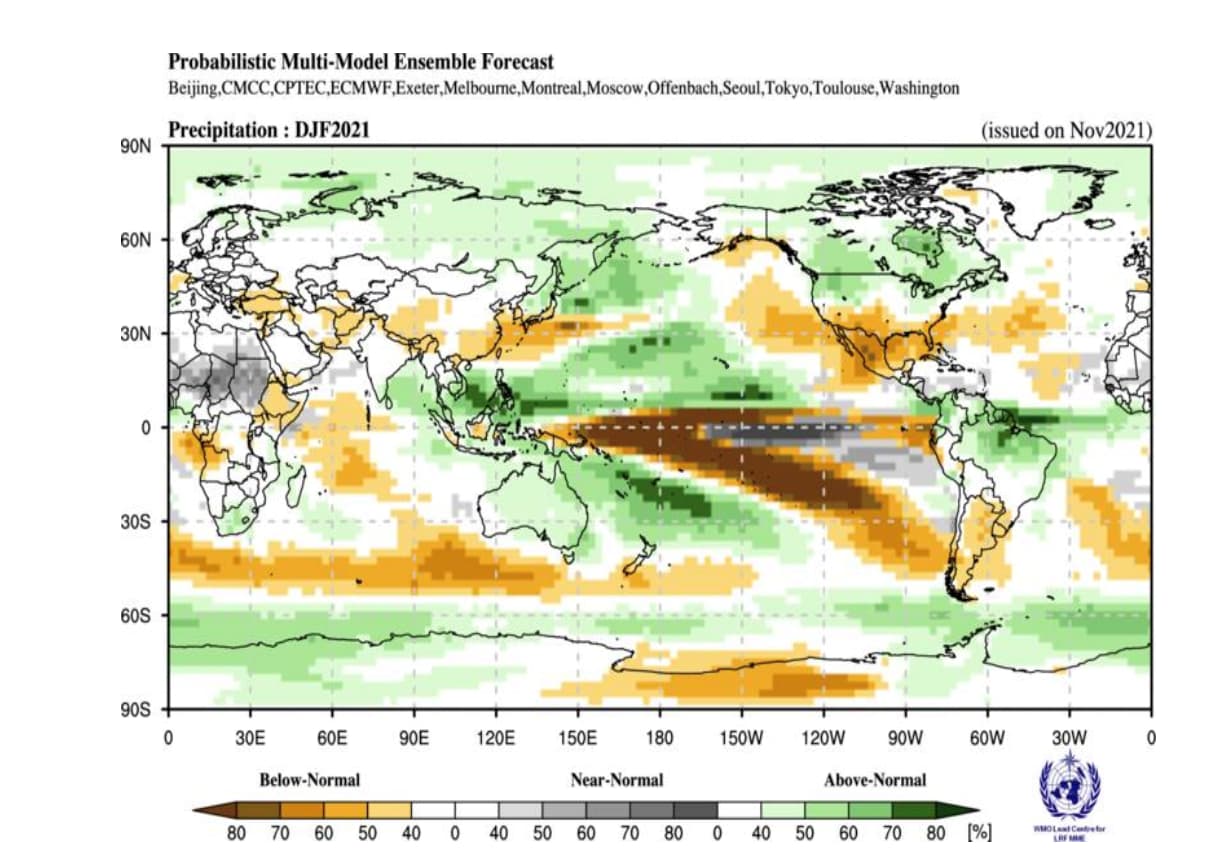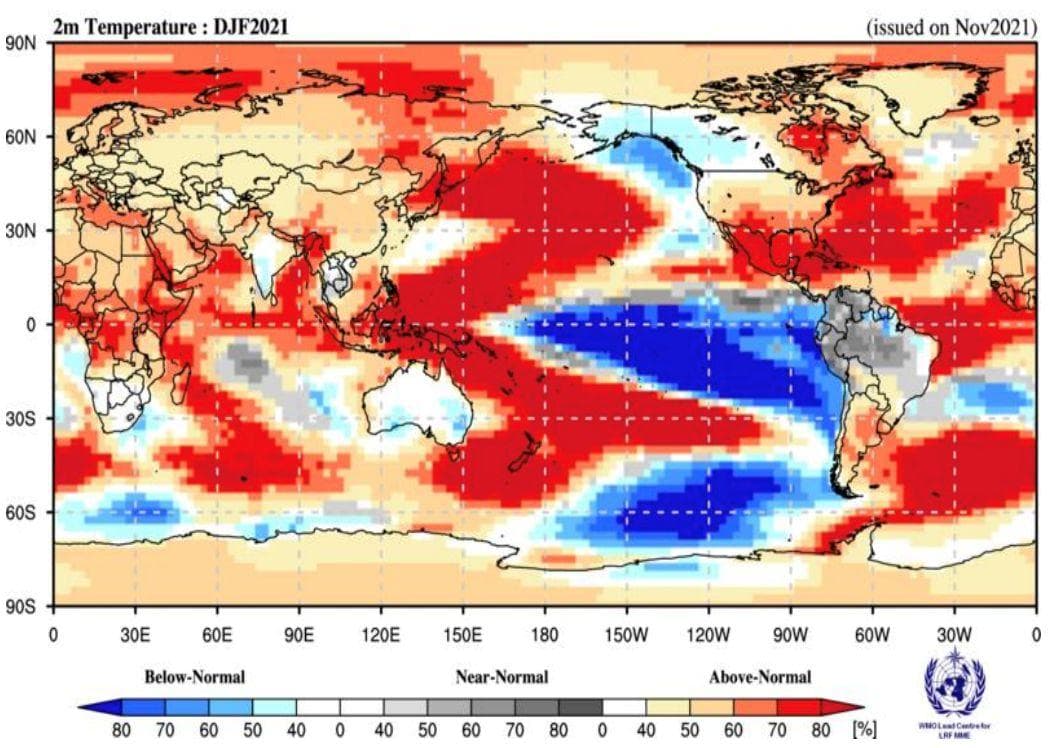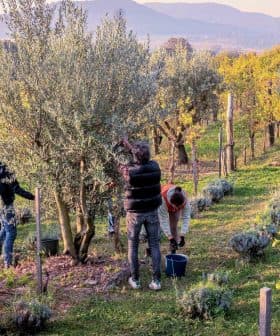La Niña Is Back, Bringing Rain and Drought for Second Straight Year
The World Meteorological Organization predicts that La Niña will result in cooler, wetter weather in Australia. California, Europe and South America will experience much warmer, drier weather.
La Niña has developed in the Pacific Ocean for the second year in a row, with expectations for it to continue until 2022, intensifying rain and drought in different regions worldwide. The World Meteorological Organization forecasts a weak to moderate 2021/22 La Niña, with potential impacts on water supply, health, disaster management, and agriculture due to varying rainfall patterns and prolonged dry spells in different areas.
For the second consecutive year, the weather phenomenon known as La Niña has developed in the Pacific Ocean and is expected to continue until 2022.
The counterpart of the opposing and better-known El Niño is expected to intensify rain and drought in different world regions.
2021 will be one of the 10 warmest years on record, rather than the warmest year. This is a short-lived respite and does not… reduce the urgency of climate action.
While El Niño is linked to abnormal warming of the eastern equatorial Pacific Ocean, La Niña involves cooling this significant section of the ocean.
See Also:Meteorologists Confirm Record-High Arctic TemperatureThe cooling effect causes changes in atmospheric circulation or winds, air pressure and rainfall, disrupting weather patterns across the world.
According to World Meteorological Organization (WMO), the 2021/22 La Niña will be weak or moderate compared to 2020/21.
However, it still carries the possibility of affecting sensitive sectors such as water supply, health, disaster management and agriculture because some areas are likely to receive more rainfall compared to others, with some regions enduring prolonged dry spells.

Anticipated precipitation changes due to La Niña. (Image: WMO)
“[La Niña’s] impacts can really spread around the world because of the way global circulation works,” Tim Stockdale, a researcher at the European Center for Medium-Range Weather Forecasts, told the Financial Times.
The WMO forecasts an unusually warm winter for the Arctic and northern Asia, eastern North America and Europe. Above-average temperatures are also expected in the South Pacific and equatorial Africa.
South America, northwestern North America, the Indian subcontinent, South East Asia and Australia are all expected to experience cooler weather than usual.
“The cooling impact of 2020/21 La Niña – which is typically felt in the second half of the event – means that 2021 will be one of the 10 warmest years on record, rather than the warmest year,” said WMO Secretary-General Petteri Taalas. “This is a short-lived respite and does not reverse the long-term warming trend or reduce the urgency of climate action.”

Anticipated temperature changes due to La Niña. Image: WMO
La Niña’s effects also include abnormally long dry spells in Central Asia and North and South America. Last year’s La Niña has been linked with an ongoing drought in Afghanistan. Meanwhile, the northwestern United States is expected to experience unusually wet conditions throughout the year.
“Good for [the Northwest], probably not so good for central, southern California,” Mike Halpert, the deputy director of the United States National Oceanic and Atmospheric Administration’s climate prediction center, told ABC News.
The phenomenon also causes higher-than-normal rainfall coupled with cyclones in South East Asia and Australia, which experienced the wettest November 2021 in 121 years of recorded history.
Additionally, more countries are likely to feel the effects of La Niña because vulnerable populations have been hit hard by extreme weather events in recent years and the Covid-19 pandemic.
According to WMO, there is a 90 percent chance that tropical Pacific sea surface temperatures will remain at La Niña levels until the end of 2021 and a 75 percent chance of the temperatures staying at La Niña levels until the first quarter of 2022.
Share this article









